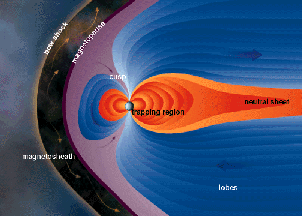This is a drawing of the magnetosphere of Uranus.
Click on image for full size
An Overview of Uranus' Magnetosphere
The magnetosphere of Uranus is medium sized, but still much larger than the Earth's. It extends well beyond the orbits of Uranus' moons. It is probably generated in the icy interior layers, rather than with a metallic component at the core.
The magnetosphere of Uranus has a very strange orientation, tilted by almost 60 degrees from the vertical. The extreme tilt, combined with the extreme tilt of the rotation axis of Uranus, provides for a completely unique magnetosphere, one which has a twisting structure!
Mathematical theory suggests that the rings of Uranus affect the both the motion of particles in the magnetosphere, as well as creating a strange, tiny plasmasphere instead of one large version.
The Auroraon Uranus is difficult to detect, and so are radio emissions from Uranus, which means that the magnetosphere of Uranus may be almost empty, swept clean by the rings of Uranus!
You might also be interested in:

Magnetospheres are generated with 1.) magnetic materials and 2.) with motions within the magnetic material. The terrestrial planets generate magnetospheres within the iron cores at the center. This leads
...more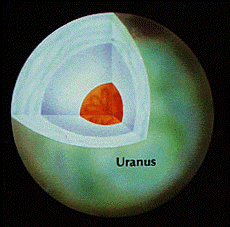
Motions in the interior of a planet help carry heat from the inside to the outside. The drawing to the left illustrates the kind of movements that happen in interior of a planet. Material rises from the
...more
The Giant planets do not have the same kind of structure inside that the terrestrial planets do. Their evolution was quite different than that of the terrestrial planets, and they have much more gas and
...more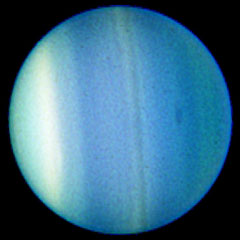
Uranus is the tilted planet. Its spin axis, which defines the locations of its North and South Poles, is tilted almost 98┬░ away from the "upright" direction perpendicular to its orbital plane. In other
...more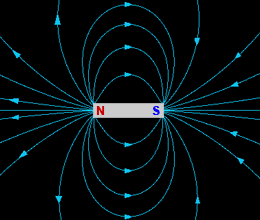
You are probably familiar with bar magnets. Bar magnets have two magnetic poles - north and south. The magnetic field around a bar magnet is called a dipole ("two poles") magnetic field. Bar magnets are
...more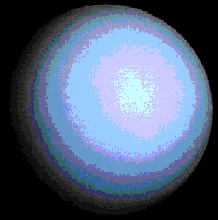
The bland aquamarine face of Uranus bears witness to the fact that Uranus is enshrouded in clouds. The planet appears to be blue-green because the atmosphere absorbs the red wavelengths of the visible
...more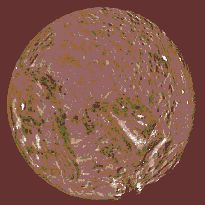
Uranus has // Call the moon count function defined in the document head print_moon_count('uranus'); fascinating moons and a complicated ring system. The ring system is a completely different form of ring
...more
Atmospheres of the giant planets have definitely evolved from their formation out of the primitive solar nebula. How much they have evolved remains to be seen, however. Because of their enormous gravity,
...more


